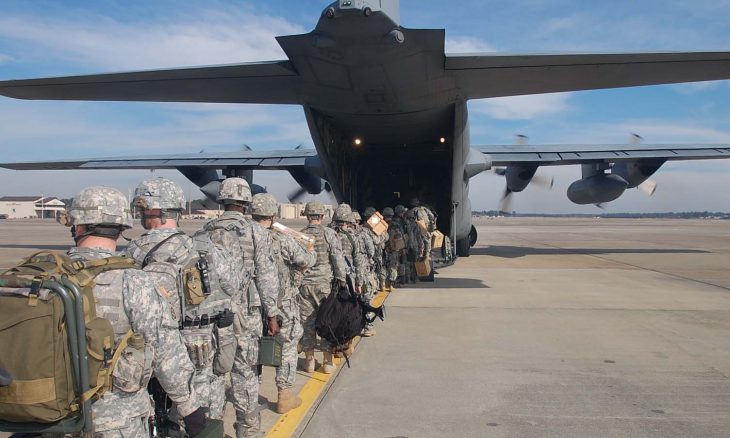Military Readiness vs Modern Threats.
PRAY FIRST for God’s guidance in understanding the complexities of our nation’s defense and for the leaders to be given wisdom to discern truth, compassion to consider all perspectives, and courage to act justly in promoting peace.
He has told you, O man, what is good; and what does the Lord require of you but to do justice, and to love kindness, and to walk humbly with your God? Micah 6:8
What does it truly mean to keep a nation secure in a world where threats are no longer just on the battlefield? National defense is more than military might. It’s a comprehensive strategy to protect a nation’s people, values, and interests. The U.S. Department of Defense defines its mission as providing “the military forces needed to deter war and ensure our nation’s security.” This encompasses not only traditional military operations but also energy production, infrastructure protection, homeland security, and emergency preparedness.
Military preparedness refers to the readiness of armed forces to respond effectively to threats. This includes maintaining trained personnel, advanced equipment, and strategic plans to address various scenarios, from conventional warfare to cyberattacks.
The ongoing conflict in the Middle East escalated recently between Israel and Iran as both countries have launched aerial attacks. The U.S. struck Iranian nuclear facilities over the weekend and Iran responded by firing ballistic missiles at the U.S. Al Udeid Air Base in Qatar. President Donald Trump announced a ceasefire the evening of June 23rd. Israel and Iran agreed to the ceasefire, but exchanged fire even after the deadline. The president called on both nations to deescalate and maintain the ceasefire. As events rapidly develop, the importance U.S. military readiness to respond to dynamic global tensions is highlighted more than ever.
Structure and Readiness
The U.S. military consists of six branches: Army, Navy, Air Force, Marine Corps, Coast Guard, and Space Force. Each branch has specialized roles, ensuring comprehensive coverage across land, sea, air, cyber, and space domains. For instance, the Space Force focuses on space-based operations, reflecting the evolving nature of warfare.
Readiness is assessed through various measures, including personnel training, equipment modernization, and logistical capabilities. The Government Accountability Office notes that nearly two decades of conflict have degraded U.S. military readiness, necessitating urgent reforms to adapt to growing threats from major powers.
In fiscal year 2024, the U.S. defense budget was set at $841.4 billion—reflecting the nation’s commitment to maintaining a strong defense position. This funding supports personnel, equipment, research, and operations across all military branches.
Oftentimes forgotten, Congress plays a critical role in determining defense spending levels, ensuring that funds are distributed effectively and align with national priorities. Oversight mechanisms, including audits and reports, are in place to promote transparency and accountability in defense expenditures.
Modern Threats and Adaptation
The nature of threats to national security has evolved—cyber warfare, terrorism, geopolitical tensions, and more. The Department of Homeland Security’s 2025 Homeland Threat Assessment highlighted the increasing complexities straining the immigration system, transnational organized crime, and growing cyber threats.
To address these challenges, the military is investing in advanced technologies, including artificial intelligence, cyber defense systems, and space-based capabilities. These efforts plan to improve situational awareness, decision-making, and response times in the face of emerging threats.
Alliances like NATO play a vital role in U.S. national defense, promoting collaboration and shared responsibilities among member nations. NATO’s core tasks include deterrence and defense, crisis prevention and management, and cooperative security.
International coalitions enable the pooling of resources, intelligence sharing, and coordinated responses to global challenges. However, reliance on such alliances also requires careful diplomacy and alignment of strategic objectives among diverse partners.
Impact on Society and the Economy
The defense industry significantly influences the U.S. economy—contributing to job creation, technological innovation, and regional development. In 2024, the Department of Defense and other national security agencies spent over $800 billion, accounting for more than one out of every 30 dollars in the U.S. economy.
While defense spending drives economic activity, it also raises questions about opportunity costs and resource allocation. Balancing defense needs with investments in education, healthcare, and infrastructure remains a critical policy consideration.
Civilian control of the military is a cornerstone of American democracy, guaranteeing that elected officials oversee military operations and decisions. This principle is incorporated in laws and reinforced through institutional checks and balances.
Maintaining a strong defense stance without promoting unnecessary conflict requires strategic foresight, ethical considerations, and adherence to democratic norms. As the nature of warfare evolves, so too must the frameworks that govern military engagement and oversight.
Why It Matters and How We Can Respond
National defense and military preparedness intersect with deeper questions of responsibility, restraint, and care for others. These aren’t just policy matters. They involve stewardship of power, discernment in leadership, and a commitment to the dignity of human life. Thoughtful engagement begins with recognizing that strength and wisdom are not opposing values. While protection of a nation is necessary, how that protection is pursued, and for whom, matters deeply. This means advocating not only for physical safety but also for the ethical use of force, the well-being of service members and civilians, and the long-term stability that comes through diplomacy and justice.
It is possible to value preparedness without glorifying violence, and to support peace without ignoring the need for defense. In a time of global tension and rapid change, these tensions call for humility, wisdom, and prayer not just in policy but in posture. Scripture encourages us to pray for leaders and authorities—asking for guidance and discernment in decision-making. As 1 Timothy 2:1-2 states: “First of all, then, I urge that supplications, prayers, intercessions, and thanksgivings be made for all people, for kings and all who are in high positions, that we may lead a peaceful and quiet life.”
HOW THEN SHOULD WE PRAY:
— Pray for God to protect those who serve in the military and provide them with strength and courage. You keep him in perfect peace whose mind is stayed on you, because he trusts in you. Isaiah 26:3
— Pray for our nation’s leaders in their efforts towards peace and reconciliation in areas of conflict. Blessed are the peacemakers, for they shall be called sons of God. Matthew 5:9
CONSIDER THESE ITEMS FOR PRAYER:
- Pray for God to guide and direct our leaders as they guide and develop the technology that could keep Americans safe.
- Pray for God to be near the men and women of our Armed Forces and their loved ones.
- Pray for a spirit of peace to prevail around the globe.
Sources: Department of Defense, U.S. Government Accountability Office, Department of Homeland Security, North Atlantic Treaty Organization, Center for Strategic and International Studies, Congressional Research Service, USAFacts, The Professional Journal of the U.S. Army









